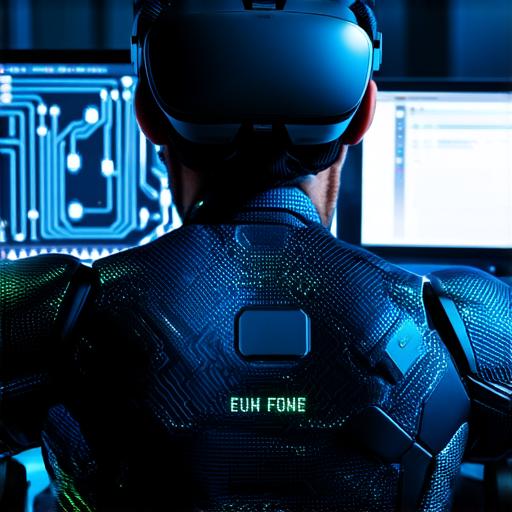Virtual Reality (VR) has transformed the gaming industry by providing an immersive experience that transports players into different worlds. With VR continuing to grow in popularity, game engines like Unreal Engine have become essential tools for developers looking to create high-quality VR games quickly and efficiently.
Key Insights for VR Game Development
1. Immersion is critical: One of the main advantages of VR gaming is the level of immersion it provides. To make the most of this, developers need to ensure that their games are designed with an immersive experience in mind. This means creating a realistic environment, providing intuitive controls, and minimizing distractions from outside the game world. Immersion is critical for VR games because players want to feel as if they are truly in the game world.
2. Performance is essential: VR games require high performance to avoid motion sickness and provide a seamless experience. Developers should optimize their games for VR hardware and ensure that they run smoothly at all times. This may involve tweaking graphics settings, reducing draw calls, and minimizing frame rate drops. If the game lags or stutters, it can cause motion sickness and detract from the overall immersion of the experience.

3. Motion sickness is a concern: Motion sickness is a common issue in VR gaming, particularly when the game world is not stationary or the player’s movement is too sudden. Developers should take steps to minimize motion sickness by providing smooth transitions between different environments and minimizing sudden changes in movement. Motion sickness can be a significant barrier for many players, so it’s essential that developers prioritize this issue when developing VR games.
4. Sound design is important: Sound design plays an essential role in creating an immersive VR experience. Developers should pay attention to the audio cues in their games, ensuring that they are appropriate for the game world and provide a sense of direction and location. Sound can also be used to create tension and suspense, which can enhance the overall immersion of the game.
Key Strategies for VR Game Development
1. Start with a solid plan: Before starting any VR game development project, it’s essential to have a clear plan in place. This should include defining the target audience, outlining the game mechanics, and creating a rough prototype of the game world. Having a solid plan will help ensure that the development process stays on track and avoids costly mistakes later on. It’s also essential to define the scope of the project, including the budget, timeline, and resources required for development.
2. Use pre-built assets: Unreal Engine provides a wide range of pre-built assets that developers can use to create their games quickly and efficiently. These assets include characters, environments, and animations, making it easier for developers to focus on creating the game mechanics and story. Using pre-built assets can also save time and resources, allowing developers to focus on other aspects of the project.
3. Leverage Unreal Engine’s VR tools: Unreal Engine includes several tools specifically designed for VR development, such as motion controllers, room-scale VR support, and the ability to create 360-degree videos. These tools can help developers create more immersive and engaging VR games quickly and easily. For example, motion controllers can be used to provide intuitive controls that mimic real-world actions, while room-scale VR support can be used to create a more realistic game world.
4. Iterate and refine: Developing a VR game is an iterative process that involves constant testing and refinement. Developers should be prepared to make changes and improvements based on user feedback, as well as their own testing and analysis of the game’s performance. It’s also essential to prioritize feedback from the target audience to ensure that the game meets their needs and expectations.
Case Studies and Personal Experiences
One example of successful VR game development using Unreal Engine is the popular game “Beat Saber.” This game was created by Beat Games, a small indie studio that used Unreal Engine to create a unique and immersive rhythm game experience. The game’s success has led to numerous awards and accolades, including being named one of the top-selling VR games of all time. The developers at Beat Games prioritized creating an immersive experience by focusing on sound design and creating a realistic environment that matched the music in the game. They also leveraged Unreal Engine’s VR tools to create intuitive controls and provide a seamless gameplay experience.
Another example is the game “Tilt Brush” developed by Oculus VR. This game allows players to create and manipulate 3D objects in a virtual space using motion controllers. The developers at Oculus prioritized creating a realistic environment that mimicked the physical world, allowing players to feel as if they were truly in the game world. They also leveraged Unreal Engine’s VR tools to create intuitive controls that allowed players to interact with objects in a natural way.
In conclusion, developing VR games using Unreal Engine requires careful planning and execution. Developers must prioritize immersion, performance, motion sickness, and sound design when creating their games. By leveraging Unreal Engine’s VR tools and pre-built assets, developers can create engaging and immersive experiences that transport players into different worlds. With the growing popularity of VR gaming and the power of Unreal Engine, there has never been a better time for developers to explore this exciting new medium and bring their creative visions to life.



